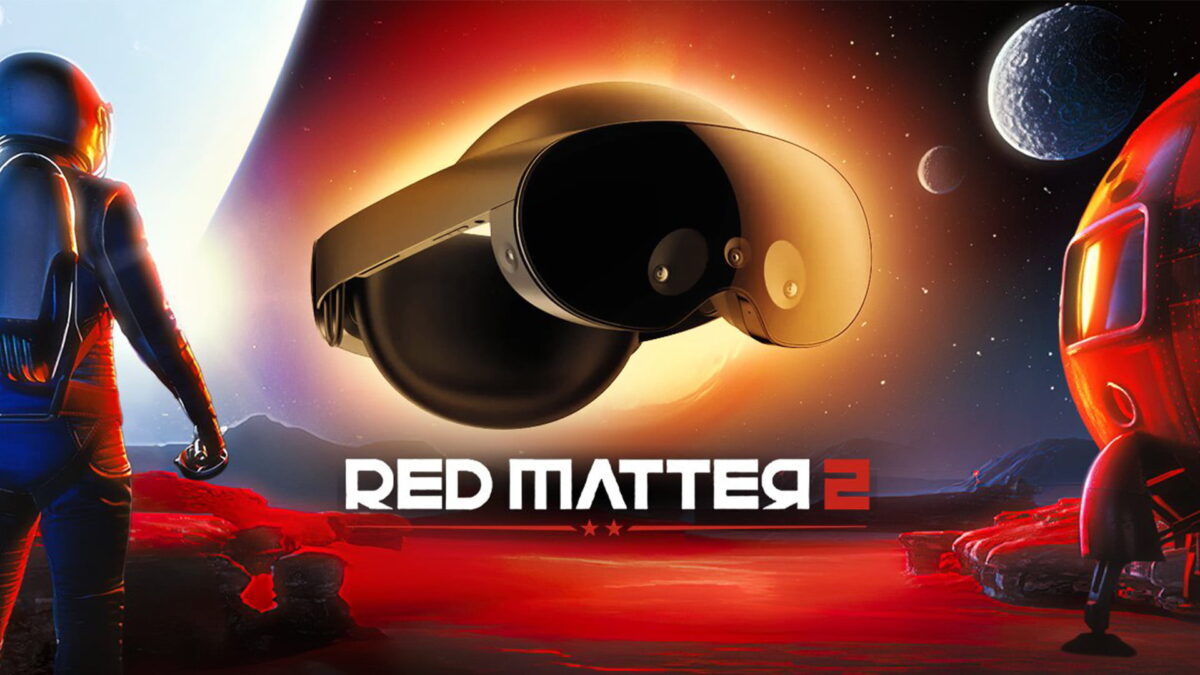Red Matter 2: Graphics pearl gets Quest Pro upgrade

Red Matter 2 is one of the prettiest VR games for Meta Quest 2. It's even prettier to look at now on Meta Quest Pro.
As of yesterday, Meta Quest Pro (info) is available everywhere Meta sells VR products. On the same day, the studio behind Red Matter 2 (review) released an update that makes use of the headset's exclusive hardware features and improves the overall visual impression.
A studio delivering a tech upgrade so quickly is no small matter. Since Meta Quest Pro costs many times more than Meta Quest 2 (review), the target audience is many times smaller. This, in turn, makes it less worthwhile for studios to deliver app updates for Meta Quest Pro alone. Kudos to Vertical Robot for the quick turnaround!
The studio implemented Eye Tracked Foveated Rendering as well as Local Dimming and increased the resolution in which the game runs by 30 percent. "Quest Pro is a beast," the developers wrote on Twitter.
Quest Pro is here! We've just released an update for Red Matter 2 that you should NOT miss. We've added local dimming, Eye Tracked Foveated Rendering, and even increased pixel resolution by over 30%!
Quest Pro is a beast! #MetaQuestPro #VRhttps://t.co/o4z55IgRew pic.twitter.com/XAq3MtQNcp- Vertical Robot (@Vertical_Robot) October 25, 2022
Dynamic foveated rendering: not a no-brainer
Eye Tracked Foveated Rendering (ETFR) is a rendering technique where only the area the eye focuses on displays in full resolution. The periphery is rendered in lower resolution. This saves a lot of computing power, which can be used for more beautiful graphics or a higher resolution.
ETFR is only available on Meta Quest Pro, since Meta Quest 2 does not offer eye tracking. This, and older Meta headsets only support Fixed Foveated Rendering (FFR). Here, fixed-edge areas of the image are rendered in a lower resolution, regardless of where the eye focuses.
According to Meta's own measurements, ETFR saves only slightly more power than FFR, but is usually less visible. However, this also depends on how aggressively the rendering techniques are used. Meta offers different setting options. Developers will definitely need to test ETFR in advance and enable it for their VR app.
More contrast thanks to Local Dimming
The same is apparently true for Local Dimming. The LC displays of the Meta Quest Pro offer a special LED backlight. Software developed by Meta can switch off more than 500 independent LED blocks, which results in darker blacks. Meta speaks of up to 75 percent more picture contrast compared to Meta Quest 2.
However, this option also has to be activated by developers first. According to Vertical Robot, this is due to an increased image rendering latency of 0.15 milliseconds. "It's up to the developer to decide if it's worth it or not for their specific application," the studio wrote on Twitter.
Vertical Robot was also able to increase resolution by 30 percent. It is unclear whether this was made possible by ETFR, the additional power of the Snapdragon XR2+ Gen 1, or both factors.
Meta Quest Pro is the first headset to use the Snapdragon XR2+ Gen 1 (info). It delivers up to 50% more performance than the SoC of the Meta Quest 2, but most of the additional performance is used for face and eye tracking as well as the mixed reality mode. At least the latter is not used in Red Matter 2.
I've asked Vertical Robot to reveal more details about the update and will update this article as soon as I hear from the developers.
Note: Links to online stores in articles can be so-called affiliate links. If you buy through this link, MIXED receives a commission from the provider. For you the price does not change.